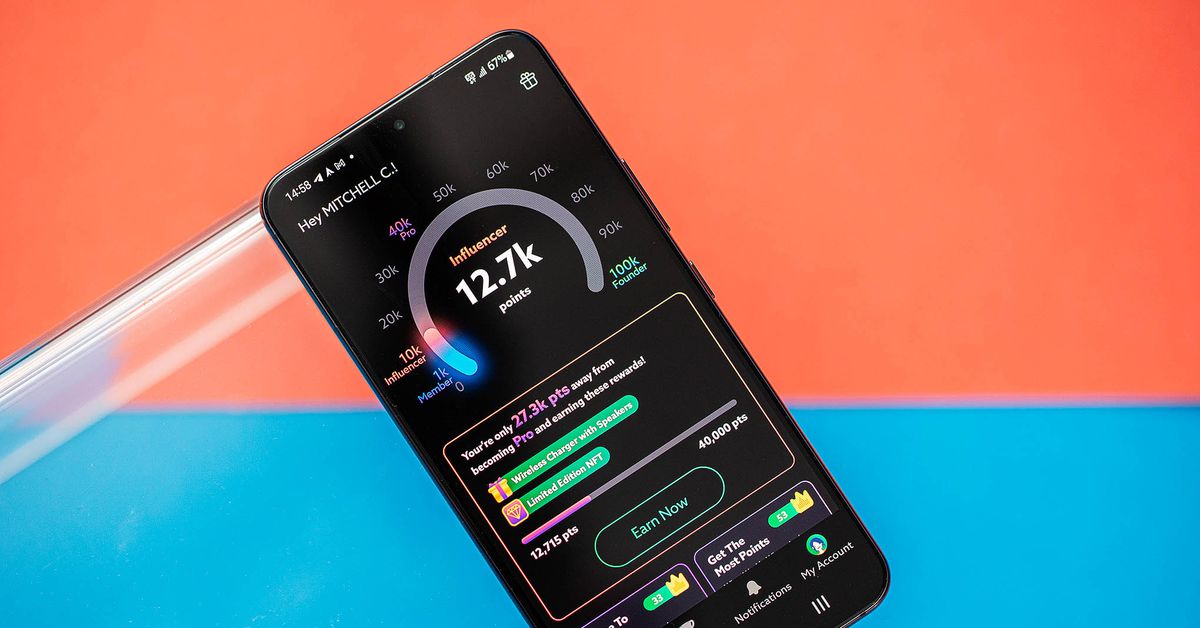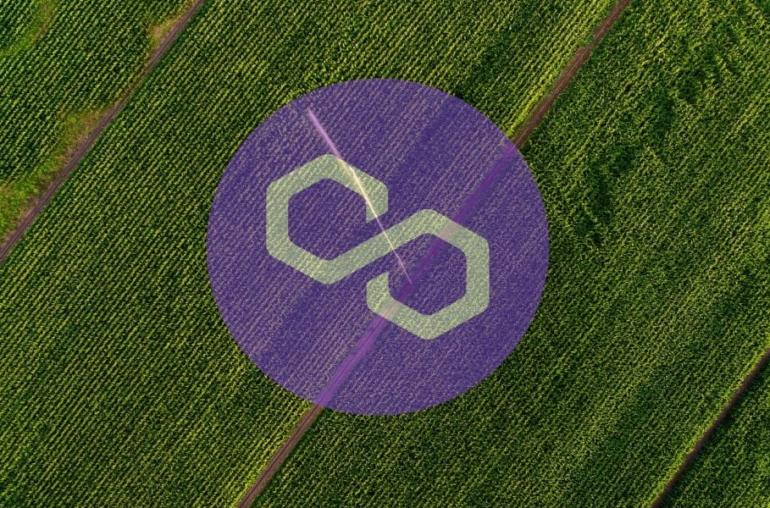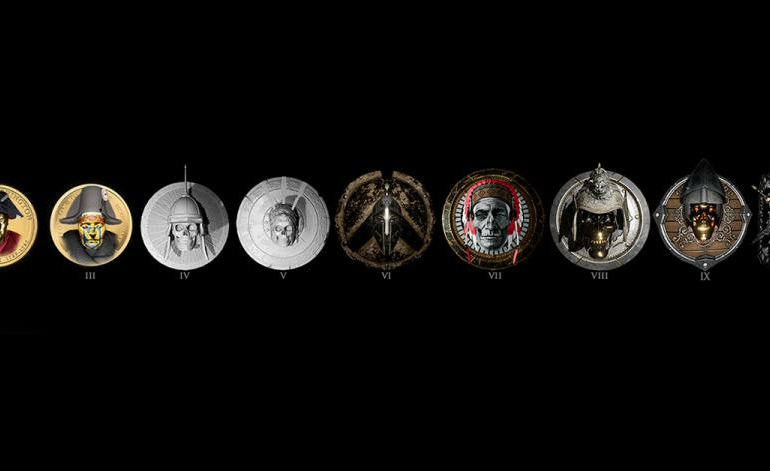We use cookies and other tracking technologies to improve your browsing experience on our site, show personalized content and targeted ads, analyze site traffic, and understand where our audiences come from. To learn more or opt-out, read our Cookie Policy. Please also read our Privacy Notice and Terms of Use, which became effective December 20, 2019.
By choosing I Accept, you consent to our use of cookies and other tracking technologies.
Filed under:
Or: how I learned a lesson about downloading crypto software half-cocked
For months, Dish has been promising one thing about its cellular network — that it would come with NFTs. (And also that it would cover 20 percent of Americans, like it’s legally required to do.) I’m happy to report that after about a month of testing, I’ve finally acquired one of these NFTs and can tell you exactly what all the fuss is about. Spoiler alert: don’t set your expectations high.
Even as someone who’s become numb to the mention of blockchain-based tokens, their presence was hard to ignore while I was testing the service, known as Project Genesis. Dish’s welcome email mentioned them, and every time I opened the Project Genesis app, it told me how close I was to getting an NFT. Doing the tasks required to earn an NFT turned out to be the easy part, though. Thanks to an unfortunate series of events, actually getting it into a crypto wallet was way harder and took way longer than I expected — though, unlike the difficulties I had signing up for the service itself when it launched, this time, it was mostly my fault.
Before we get to the part where I embarrass myself, though, I should address the whole influencer thing from the headline, which gets to the heart of why NFTs are involved with Project Genesis at all. Given that Dish is building its network basically from scratch, it needs a lot of data about the kind of experience its users are having — what kind of service do they get at certain locations, do they have enough bandwidth to actually use their phones, what does real-world coverage look like, etc. One of the ways the company collects this data is through the Project Genesis app, which users are pushed to download and use by both a sheet of paper that comes with their phones and a step during the actual Android setup process.
The app has you carry out various tasks each day, like checking in at a new location, sending a text message, or watching a YouTube video. Doing these tasks nets you points, which go toward increasing your rank — you start out as a “Member,” but if you call your mom enough times, you can eventually become an “Influencer,” then a “Pro,” and finally a “Founder.” Each tier comes with a set of rewards. You basically get a Project Genesis cup as soon as you sign up for the app, but it’ll constantly remind you that the real prizes are yet to come: just collect 9,000 more points, and you’ll get Project Genesis earbuds and a Limited Edition NFT.
There’s also, of course, the unspoken reward: if you file enough feedback through the surveys and answer the “how are things working right now, thumbs up or thumbs down” question enough times, your service might get better. During a call with some people at Dish, including corporate communications manager Meredith Diers and retail wireless vice president Jeremy McCarty, I was told that the company’s actual engineers look at the feedback from the app and will sometimes reach out to people to get more info.
As funny as it is that Dish has gamified the experience of complaining about bad cell reception (there’s a leaderboard in the app and everything), it’s actually nice to have some sort of feedback mechanism. With other carriers, all you can do is stew in annoyance when you hit a dead zone that just shouldn’t exist. With Dish, you at least have some chance of the company doing something about it.
Who cares about things like “quality of service” and “customer feedback,” though? I didn’t sign up to try out this service because I wanted to experience the attempted launch of a new major carrier. I did it because I… want! that! NFT! (Besides, it’s too early in the service’s rollout in Spokane to tell how much of an effect my feedback actually has.) So, for over a week after I received my Project Genesis phone, I dutifully logged into the app and did every single task… except for calling 10 people like the app asked because, as a zoomer, I refuse to talk on the phone even once.
Finally, a completed task, a burst of confetti, and a pop-up box. I had gotten the NFT; all I needed to do was enter my Cardano wallet address to claim it.
Now, despite the fact that I wrote an entire explainer on blockchains, I was left wondering: “what the heck is Cardano?” I figured it had to be a blockchain, just one that I had never heard of, and went to search for a wallet I could use to grab an address and finally see Dish’s NFT. (For the uninitiated: wallets are the apps you use to access your crypto assets, such as coins and NFTs.)
This is where I made a mistake. When you Google “Cardano wallet,” the first result is from the actually Cardano website, talking about “Daedalus.” Without really looking into it, I downloaded Daedalus Wallet, installed it, grabbed a receiving address, and entered it into the Project Genesis app. It told me that I could expect my NFT to arrive within 48 hours.
It may well have, but I wouldn’t have known because it took me days just to get Daedalus up and running. You see, it’s not just a wallet like Metamask or Coinbase’s wallet, where you simply set it up and can add and see assets pretty much immediately — instead, it downloads a copy of the entire Cardano blockchain (which is currently taking up around 73 GB on my SSD) and validates each and every transaction that’s ever occurred on it. This meant that it took my laptop around a dozen or so hours running full tilt to get Daedalus fully set up.
This isn’t a slight on Daedalus, to be clear, nor is it Dish’s fault that I happened to download this particular wallet without doing enough research. There are reasons why you’d want a full node wallet; it’s just that it was totally wrong if all you want to do is collect an NFT that you’re going to look at once as part of your job. Though, as a note to the Project Genesis team, it may not be a bad idea to have a button that says “how do I redeem this NFT?” There is a button labeled “Find out more about NFTs,” but learning about the things in abstract and figuring out which app I should be using to redeem this specific one are two different things. (To be clear, though, the button may have taken me to a page with that info — I just didn’t tap it because I figured I already knew what an NFT is.)
But after a few nights of my computer running full tilt (I couldn’t sync Daedalus during the day because macOS would slow to a crawl), it had finally downloaded the entire blockchain and, with it, the transaction that contained my NFT. I finally had it, sitting in my wallet. It was the moment of truth; I went to see what it was I had earned for all my hard work (read: pressing the “text a friend” button then immediately going back to the Project Genesis app because that apparently counted).
This is what I was greeted with:
In case you were wondering if everyone gets a unique NFT, it doesn’t seem like it. The transaction that deposited this wonderful piece of art into my wallet also sent a few other influencer-tier NFTs to other people, and the image included appeared to be exactly the same for those people as well. The “Pro” level NFT, however, is different. Do you want to see it? Too bad, here it is anyway, along with the top-tier “Founder” one for good measure.
Was getting my own NFT of a tattooed dog in Las Vegas — a city I have technically never even been to — worth all the trouble? All the watts I had to pump into my computer so it could confirm transactions on a blockchain I had never heard of?
Of course not. But! I did end up getting a pleasant surprise two weeks after I had initially made rank, in the form of an email from Project Genesis. “Welcome to the Influencer level,” it read, reminding me that my 10,000 points had earned me an NFT and a pair of Project Genesis Earbuds (the process for claiming these simply involved clicking a link and entering in a code and my address). As an additional bonus, though, it told me I had gotten three months of service for free, which would automatically be applied to my account.
Given that Project Genesis’ unlimited plan for smartphones costs $30 a month, that’s a $90 value. Toss in the NFT, and it adds up to a whopping $90.01 of value, just because I pressed a few buttons in an app a few times a day. Wow, I really do feel like an influencer.



